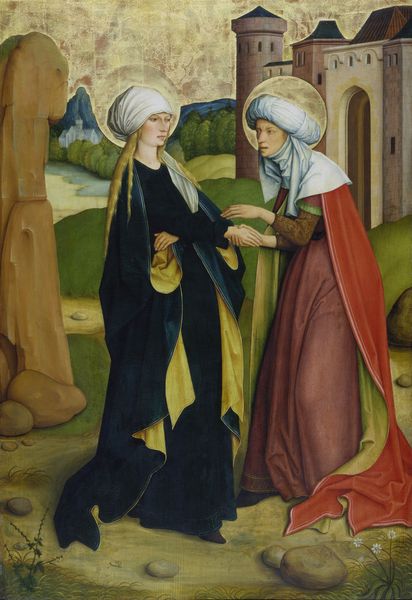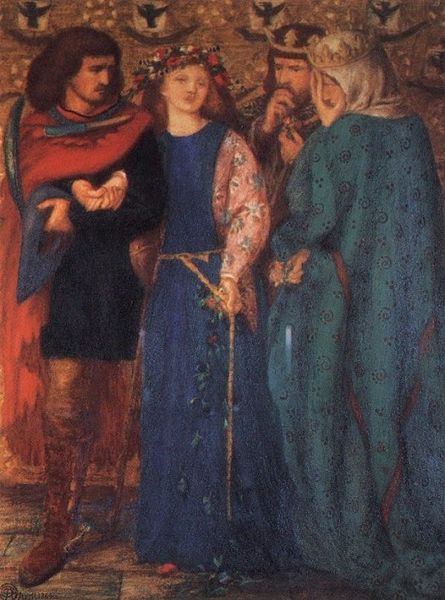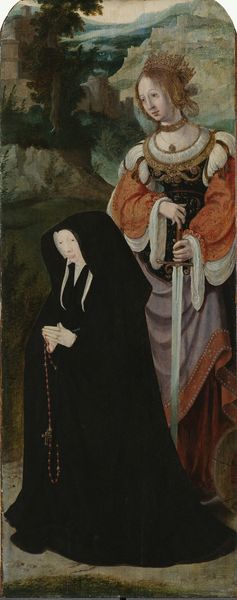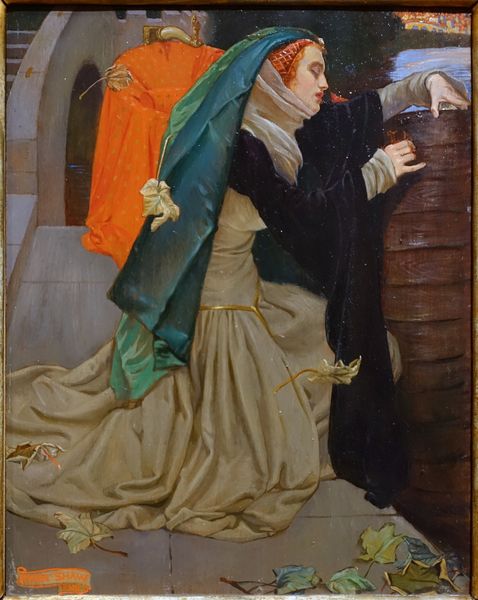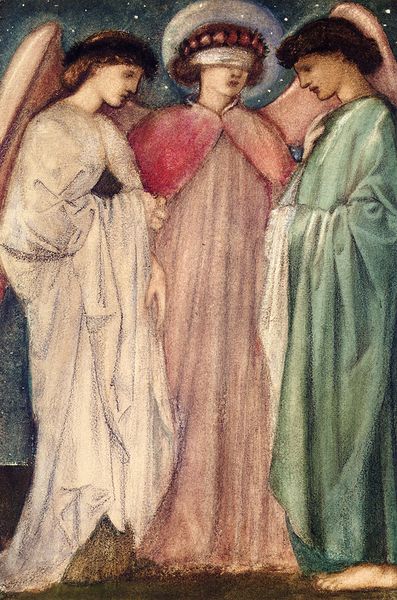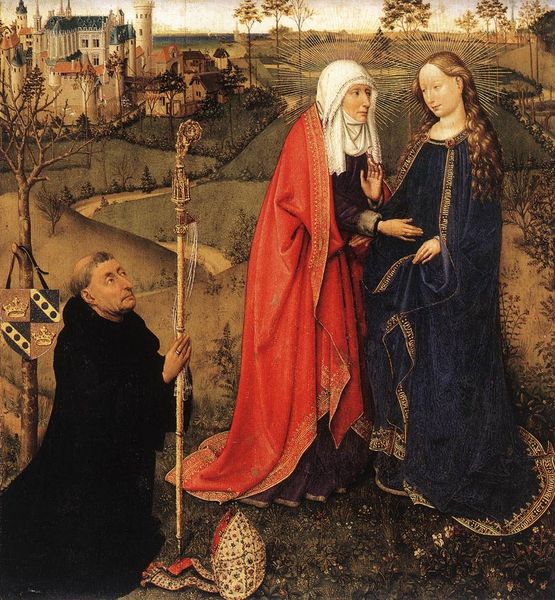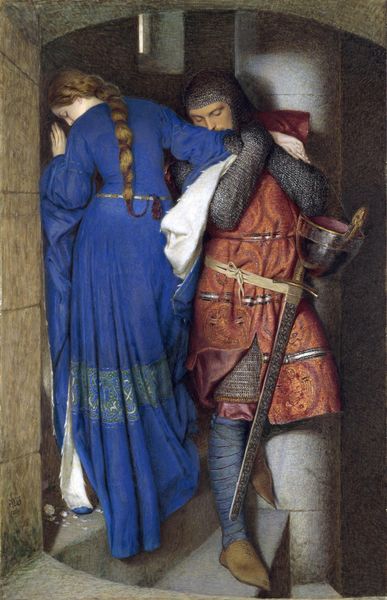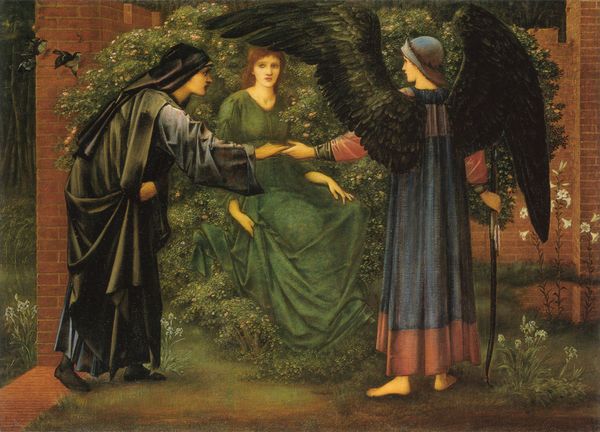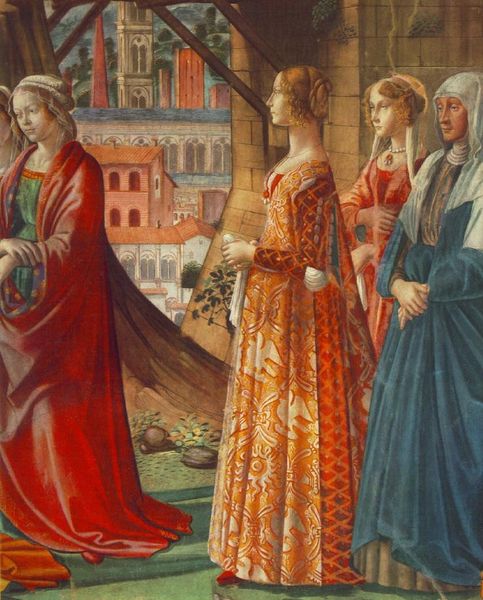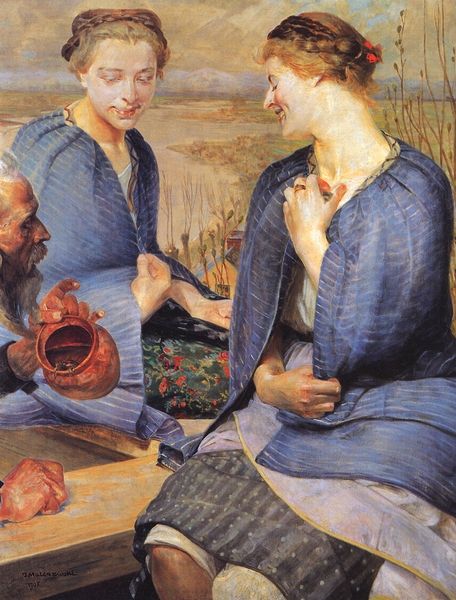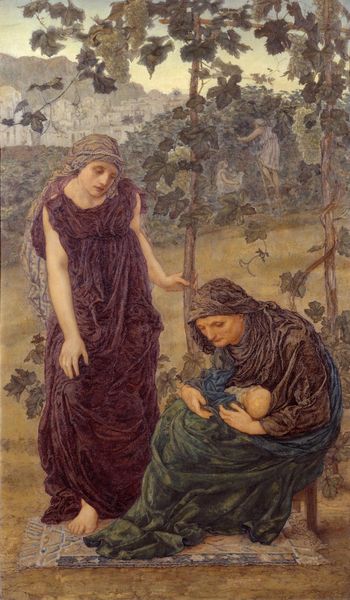
Copyright: Public Domain: Artvee
Curator: This image feels instantly…serene. There's a stillness, a quiet intimacy in the way these two figures are rendered, almost like a private ritual. Editor: What you’re sensing speaks directly to Rossetti’s aims here. Dante Gabriel Rossetti, of the Pre-Raphaelite Brotherhood, painted "The Bower Garden" in 1859. It’s rendered in oil paint on panel and represents, ostensibly, a scene lifted from Boccaccio’s "Decameron." But to see it merely as illustration is, I think, to miss Rossetti's deeper social and political objectives. Curator: Exactly! Because it is not "merely illustration," is it? This work has become an exploration of idealized female beauty and, moreover, speaks volumes about the role of women in art, society, and indeed within the male artistic gaze. Rossetti presents a consciously constructed visual language. It feels, perhaps deliberately, somewhat… performative. Editor: Well, the Pre-Raphaelites were deeply engaged with staging—creating scenes in which to question prevailing Victorian social norms and artistic conventions. For example, we see a marked interest in the decorative possibilities of art, almost elevated to subject matter in its own right, from the textile patterning of the gowns, the brickwork behind the figures, and even the copper watering pot at their feet. Curator: The Pre-Raphaelites certainly challenged accepted Academic artistic practice, but they often simultaneously fell prey to recreating or indeed upholding oppressive tropes. How do you see this working within “The Bower Garden"? Editor: It's there, in the way Rossetti uses the language of romanticism and historical subject matter to grapple with, yet also reflect the social milieu in which his works circulated. In terms of this specific painting, you might want to think about how Rossetti used the figure of the actress Ellen Terry—who served as a model for "The Bower Garden" along with Annie Miller—within a very constructed, gendered theater. How did that then position her and, by extension, how did it allow a Victorian audience to view her, to judge her? Curator: It highlights the complexities involved when one examines artistic movements as not being neutral to wider social debates or issues, especially where the representation of marginalized people is concerned. Editor: Indeed. It shows that art’s impact lies not just in its visual form, but also in the intricate ways art reflects, challenges, and perhaps also reproduces the power structures of the world around it. Curator: Thank you, your point makes it easy to rethink it beyond initial impressions.
Comments
No comments
Be the first to comment and join the conversation on the ultimate creative platform.
